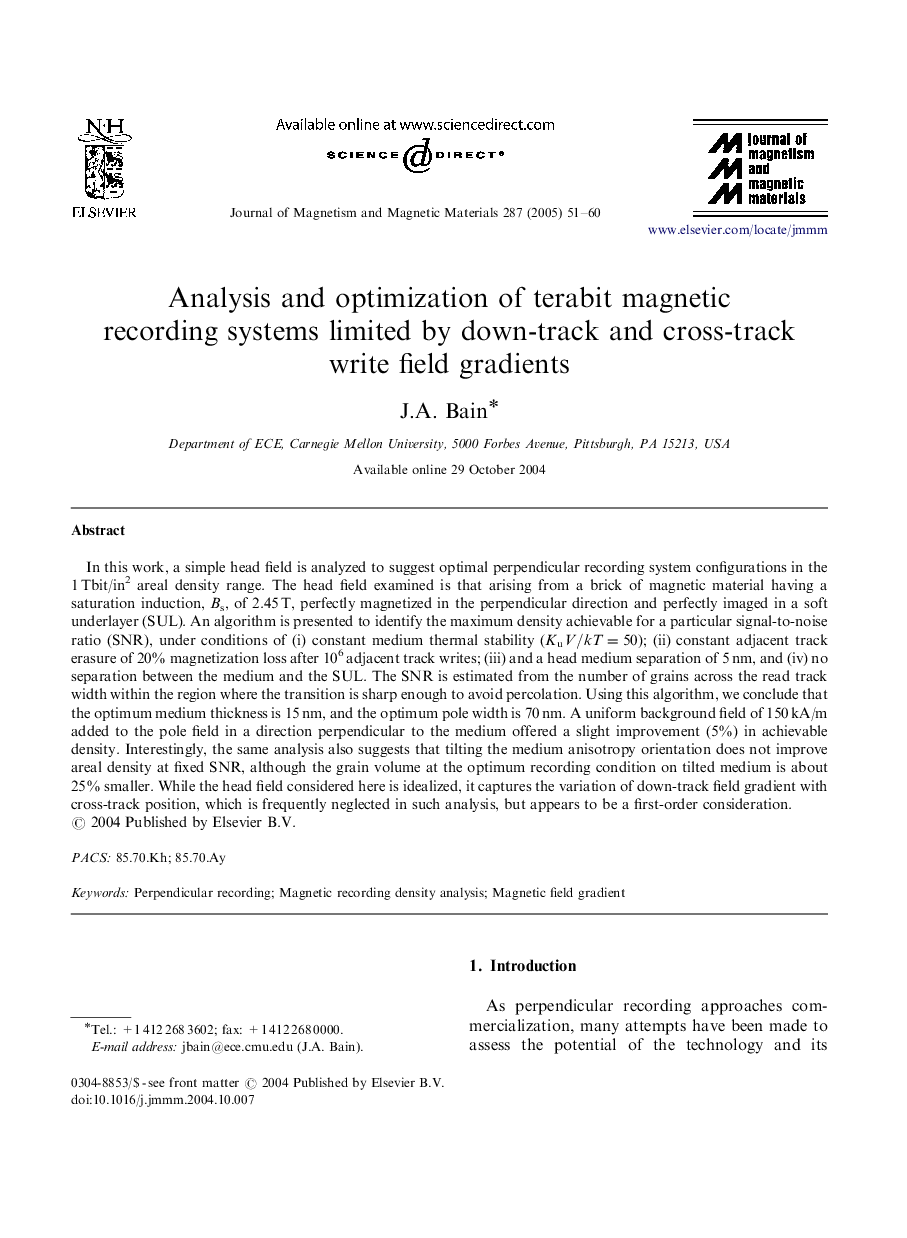| Article ID | Journal | Published Year | Pages | File Type |
|---|---|---|---|---|
| 9834500 | Journal of Magnetism and Magnetic Materials | 2005 | 10 Pages |
Abstract
In this work, a simple head field is analyzed to suggest optimal perpendicular recording system configurations in the 1Â Tbit/in2 areal density range. The head field examined is that arising from a brick of magnetic material having a saturation induction, Bs, of 2.45Â T, perfectly magnetized in the perpendicular direction and perfectly imaged in a soft underlayer (SUL). An algorithm is presented to identify the maximum density achievable for a particular signal-to-noise ratio (SNR), under conditions of (i) constant medium thermal stability (KuV/kT=50); (ii) constant adjacent track erasure of 20% magnetization loss after 106 adjacent track writes; (iii) and a head medium separation of 5Â nm, and (iv) no separation between the medium and the SUL. The SNR is estimated from the number of grains across the read track width within the region where the transition is sharp enough to avoid percolation. Using this algorithm, we conclude that the optimum medium thickness is 15Â nm, and the optimum pole width is 70Â nm. A uniform background field of 150Â kA/m added to the pole field in a direction perpendicular to the medium offered a slight improvement (5%) in achievable density. Interestingly, the same analysis also suggests that tilting the medium anisotropy orientation does not improve areal density at fixed SNR, although the grain volume at the optimum recording condition on tilted medium is about 25% smaller. While the head field considered here is idealized, it captures the variation of down-track field gradient with cross-track position, which is frequently neglected in such analysis, but appears to be a first-order consideration.
Related Topics
Physical Sciences and Engineering
Physics and Astronomy
Condensed Matter Physics
Authors
J.A. Bain,
